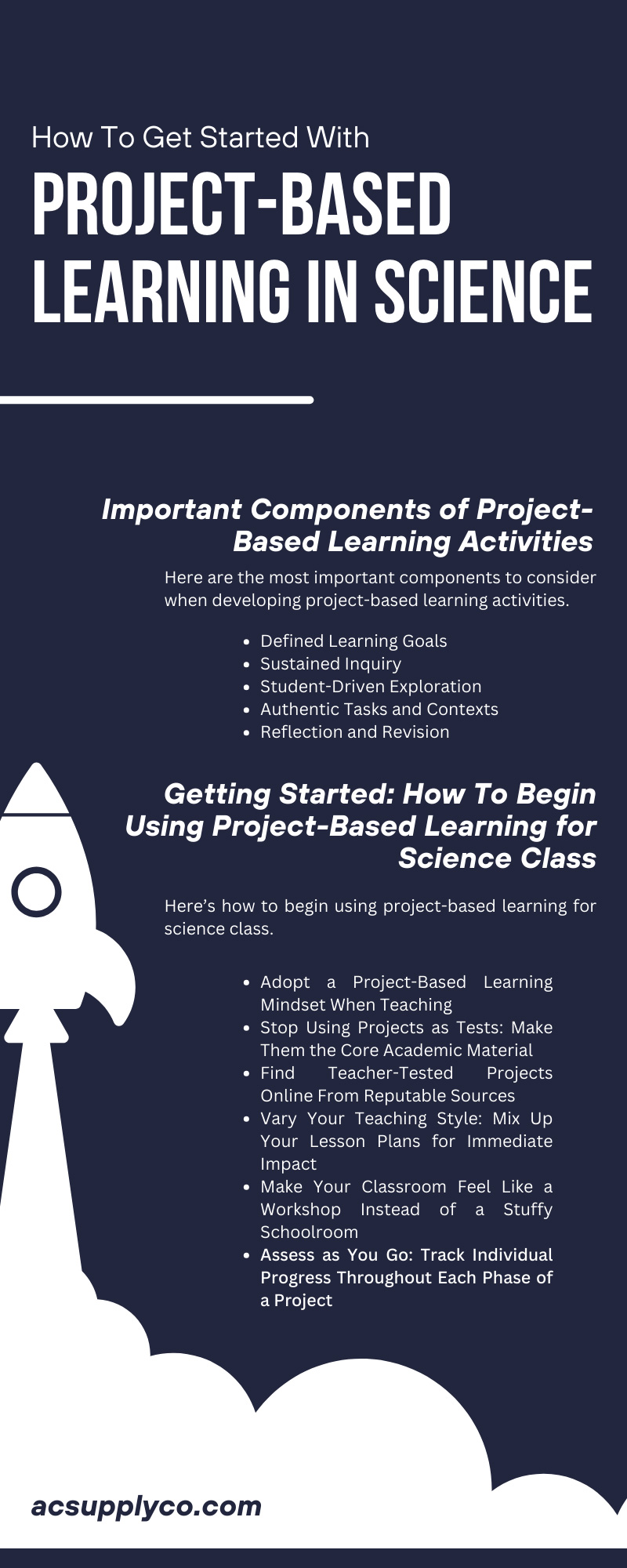Keeping students engaged in science education is a noble but tricky endeavor. Some students don’t have an innate interest in science, so it’s important to make abstract concepts tangible and related to real life. One teaching method that’s gained a lot of traction recently is project-based learning (PBL). Teachers can use project-based learning to intertwine theory and practice in a way that prioritizes student participation.
PBL is not about forcing students to complete projects for the sake of it; it’s about students actively exploring real-world problems and challenges and developing a deeper understanding of scientific concepts. In science especially, PBL can make learning more relatable and foster genuine problem-solving skills. These skills are critical for budding scientists and students looking to prepare themselves for the 21st-century workplace.
In this guide, we’ll explore how you can get started with project-based learning in science. You’ll learn how to structure your projects and discover some examples of PBL activities that will turn your science classroom into an unforgettable workshop.
A Simple Definition of Project-Based Learning
Project-based learning is a dynamic approach to teaching in which students explore real-world problems and challenges. Teachers can organically integrate multiple subjects across the curriculum, promote student engagement, and provide opportunities for collaboration and critical thinking.
In a science context, PBL tasks could range from designing a sustainable energy solution for a local community to conducting a microbiology study with real-world applications. These projects often span days or weeks, allowing students to engage in an in-depth assignment.
Why Science Teachers Should Incorporate Project-Based Learning in Their Curriculum
PBL in science education isn’t just a passing trend; it’s rooted in the essence of science itself—experimentation, inquiry, and discovery. By adopting this methodology, science teachers can create context for learning and align their lesson plans with how scientists operate in the real world.
Engaging students with interdisciplinary PBL activities can also improve their retention of scientific concepts. By working on problems that blur the lines between biology, chemistry, and physics, students learn to see the interconnectedness of these fields and can retain more knowledge.
Furthermore, PBL fosters valuable skills such as critical thinking, communication, and collaboration. These attributes are essential for scientific pursuits and everyday life occurrences.
Important Components of Project-Based Learning Activities
Successful PBL in science isn’t as simple as handing out a project brief and letting students run wild. It requires careful structuring and a clear set of learning outcomes. Here are the most important components to consider when developing project-based learning activities.
Defined Learning Goals
Before you start, it’s important to outline what new knowledge, skills, and concepts the project aims to address. You should explicitly communicate these goals to your students at the beginning of the project.
Sustained Inquiry
Projects should offer open-ended questions or problems that require sustained inquiry. They should involve multiple steps or iterations before students can reach a solution.
Student-Driven Exploration
Give students the autonomy to make decisions about the project. Let them define and carry out the investigations on their own before stepping in.
Authentic Tasks and Contexts
Teachers must create projects that offer a real-world context or applicability. For example, try linking your next project to a community issue or industry challenge. It’s important for students to make connections between scientific concepts and the world around them.
Reflection and Revision
Create space for students to reflect on what they’ve learned and to revise their approaches. This iterative process is fundamental to the scientific method and is also a good way to approach many life decisions.
Getting Started: How To Begin Using Project-Based Learning for Science Class
Transitioning to PBL may seem daunting, but with a few foundational changes to your teaching approach, you'll soon find it remarkably rewarding for you and your students. Here’s how to begin using project-based learning for science class.
Adopt a Project-Based Learning Mindset When Teaching
To effectively implement PBL, you must first shift your mindset. Think of yourself as a facilitator of learning rather than a dispenser of knowledge. Your role is to guide and support students as they work through the project rather than taking the reins throughout each project phase.
Stop Using Projects as Tests: Make Them the Core Academic Material
You must make projects an essential part of the curriculum instead of add-ons or culminating assessments. Your students will feel this shift in perspective and approach the material with more enthusiasm and dedication.
Find Teacher-Tested Projects Online From Reputable Sources
Don't reinvent the wheel. Many educators have already developed and shared effective PBL activities. Review websites and platforms dedicated to educator resources to find examples of PBL coursework. Look for ones that other teachers have used and reviewed positively, and adapt them to fit your students’ needs.
Vary Your Teaching Style: Mix Up Your Lesson Plans for Immediate Impact
Variety is key to keeping students engaged in long-term projects. Use a combination of direct instruction, guided inquiry, and independent work periods. Additionally, integrating different types of media, guest speakers, and field trips can add rich depth to projects.
Make Your Classroom Feel Like a Workshop Instead of a Stuffy Schoolroom
Your classroom should energize your students and inspire them to learn from their projects. To make your classroom feel like a workshop instead of a stuffy schoolroom, you should set up different stations for various parts of the projects.
This classroom setup will give students a chance to move around and collaborate and foster a creative, low-pressure environment where students feel comfortable brainstorming and asking questions.
Assess as You Go: Track Individual Progress Throughout Each Phase of a Project
Assessments in PBL shouldn’t focus solely on the final product. Instead, use formative assessments to gauge understanding and progress at various stages. Offer feedback to students as they work and adjust your teaching strategies based on their needs.
Project-Based Activities That Make Science Class Fun and Engaging
If you’re having trouble coming up with fun and engaging project-based activities for your science class, don’t panic. Here are several suggestions from your friends at AC Supply. Our recommendations will inject excitement into your science classroom and turn it into a beacon of hands-on learning.
- Design and test a water filtration system
- Simulate an infectious disease outbreak and track its spread
- Create a small-scale system for developing renewable energy sources
- Investigate an ecosystem change over time
- Create educational materials on genetics and heredity
- Build and launch a model rocket
These activities offer educational value and will pique student interest, providing a memorable, real-world context for scientific learning. If you decide to build and launch a model rocket, we recommend investing in the classroom rocket kits on the AC Supply website.
Our wholesale educational models will help your students prepare for an increasingly complex and interconnected world—all while having fun, of course! So take the leap into project-based learning and watch as your students launch into new levels of scientific engagement and understanding.



